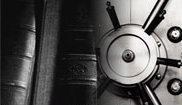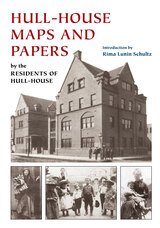
Around the time Louis Jacques Mandé Daguerre perfected his method for fixing images on polished metal plates in 1839, Harvard was emerging as a modern research institution. Accordingly, the college began amassing vast collections for teaching and research. Among these collections in the university's libraries, museums, archives, and academic departments are some of the earliest photographic documents of American life: daguerreotypes.
A Curious and Ingenious Art brings together a representative sampling of Harvard's internationally significant but relatively unknown collection of daguerreotypes. Many of these images were made for, by, and of members of the university's community and have been in its holdings for more than 150 years. The collection includes the work of some of America's pioneering daguerreotypists, such as Mathew Brady, Southworth and Hawes, and John Adams Whipple. Most notably, the Harvard collection preserved for posterity such faces of the era as Oliver Wendell Holmes, Ralph Waldo Emerson, Harriet Beecher Stowe, Henry James, James McNeill Whistler, Dorothea Dix, Jenny Lind, and even Tom Thumb.
The university also seized upon photography as a tool of scientific research, stunningly exemplified in one of the first detailed daguerreotypes of the moon taken in 1851 as well as in images capturing the emergence of modern anesthesia. An unfortunate misuse of photography is recalled in the now famous slave daguerreotypes commissioned by natural historian Louis Agassiz, who believed in the theory of separate human species.
The Harvard collection represents the early history of photography and its social meaning. The accompanying essays explore the personal, telling histories behind the images, stories that unveil the reflections of individuals who searched for purpose and promise in the new medium.


Wallace Stegner called its stacks “enchanted.” Barbara Tuchman called it “my Archimedes bathtub, my burning bush.” But to Thomas Wolfe, it was a place of “wilderment and despair.” Since its opening in 1915, the Harry Elkins Widener Memorial Library has led a spirited life as Harvard’s physical and, in a sense, its spiritual heart. Originally intended as the memorial to one man, it quickly grew into a symbol of the life of the mind with few equals anywhere—and like all symbols, it has enjoyed its share of contest and contradiction. At the unlikely intersection of such disparate episodes as the sinking of the Titanic, the social upheavals of the 1960s, and the shifting meaning of books and libraries in the information age, Widener is at once the storehouse and the focus of rich and ever-growing hoards of memory.
With copious illustrations and wide-ranging narrative, Widener: Biography of a Library is not only a record of benefactors and collections; it is the tale of the students, scholars, and staff who give a great library its life.
READERS
Browse our collection.
PUBLISHERS
See BiblioVault's publisher services.
STUDENT SERVICES
Files for college accessibility offices.
UChicago Accessibility Resources
home | accessibility | search | about | contact us
BiblioVault ® 2001 - 2025
The University of Chicago Press









